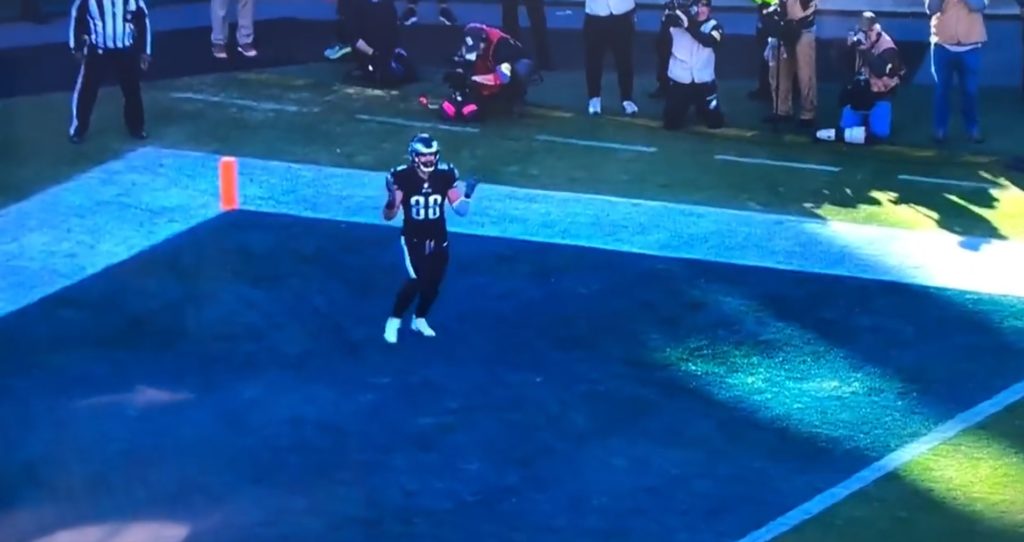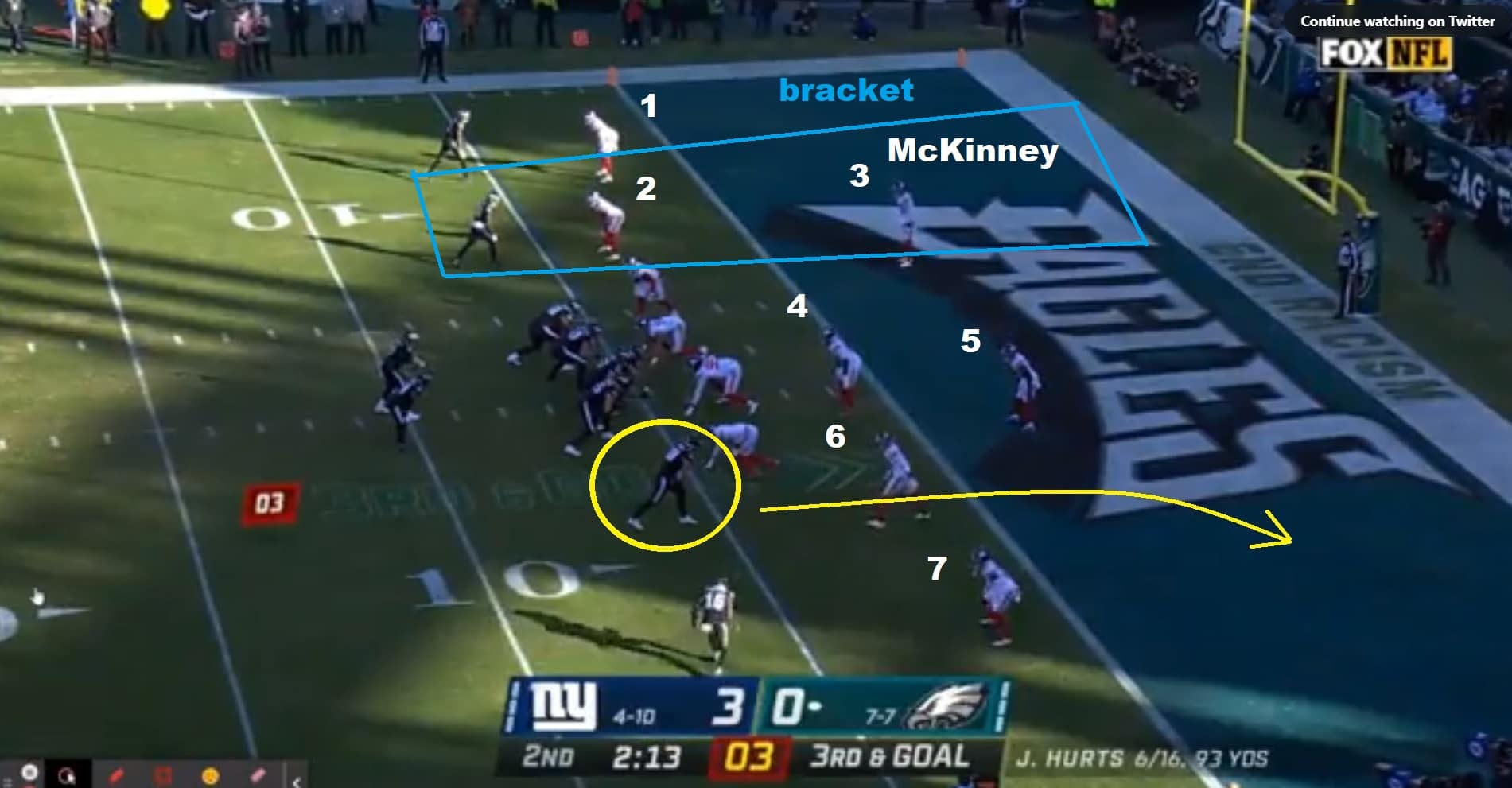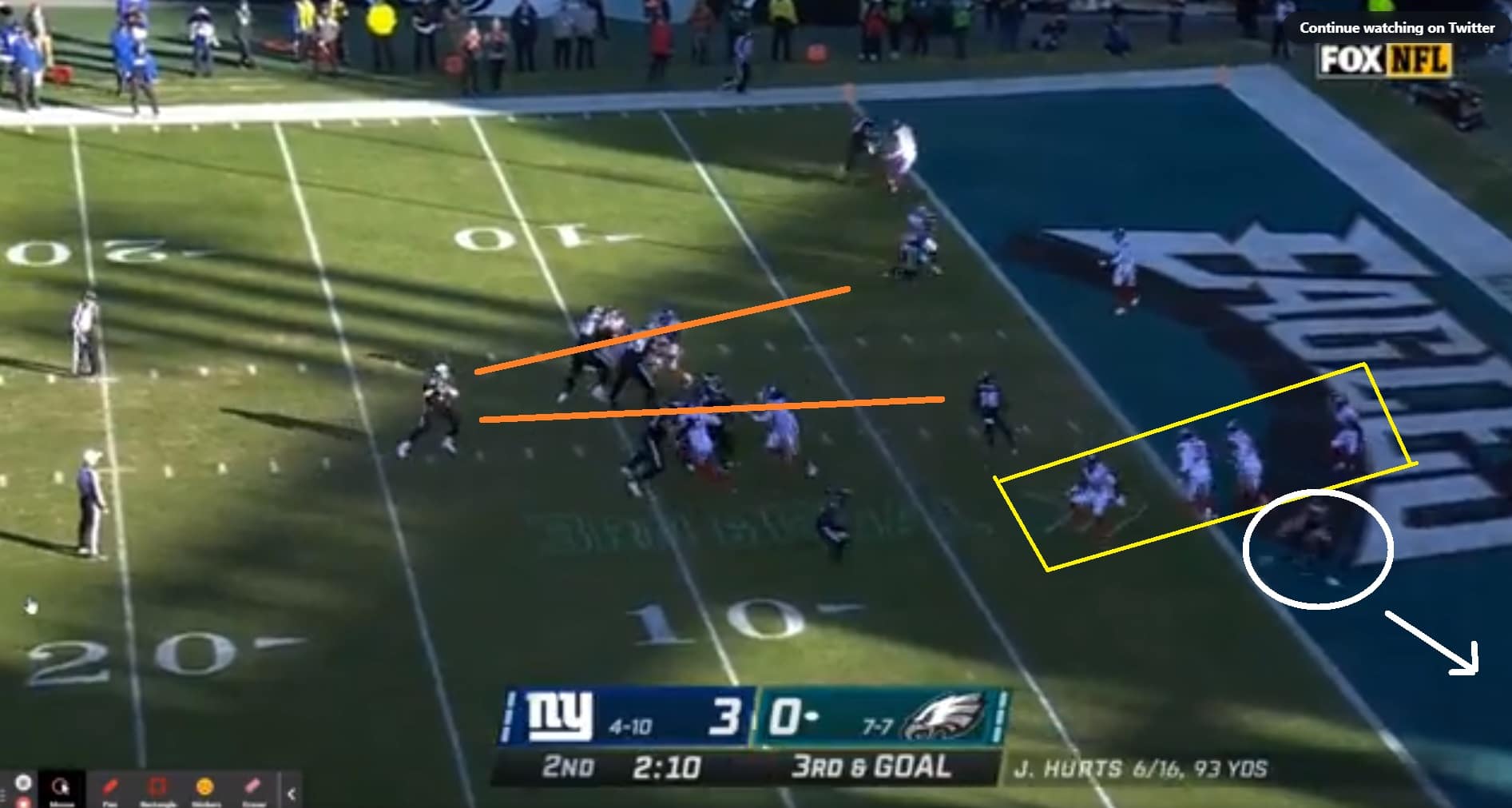Ad Disclosure
Jalen Hurts and Nick Sirianni Explain Why Dallas Goedert, Standing Wide-Open in the End Zone, Didn’t Get the Ball

On Sunday afternoon, the Eagles went into halftime with the Giants tied at three. It was not a half of football that will make it to NFL Films, for future preservation.
The big sequence that had people talking was when the Eagles went with three receivers and a tight end on third and goal, and Jalen Hurts threw short for Quez Watkins when the broadcast showed that Dallas Goedert was wide open in the end zone, with nobody around him. Here’s the broadcast replay to jog your memory:
Here's the "Dallas Goedert was wide open" play everybody was talking about on Sunday in the Eagles' 34-10 win over NYG: pic.twitter.com/oK7OCbeFcG
— Kevin Kinkead (@Kevin_Kinkead) December 27, 2021
So why did Hurts go there? Why didn’t he see Goedert in the corner?
Believe it or not, both he and Nick Sirianni gave incredibly-detailed answers regarding what happened on this play. Turns out that New York had a busted coverage that went against what they were showing before the snap, and we got a fantastic breakdown of that.
First, here’s Sirianni on the play:
I thought he went to the right place with the ball. When there’s guys breaking this way and breaking that way you have to alert a certain player, which I’ll just try to explain to you as much as I possibly can without giving anything away. You alert a certain player and then your read starts somewhere else.
Our alert was to Dallas versus a certain coverage. It wasn’t that coverage, so now we read shallow to angle. That’s what he read, so his eyes aren’t there, so I’m not one bit concerned. When you know their reads as a coach you don’t ever get on them when they miss something like that because it’s not a miss. His eyes went here to here and Dallas is only a pre-snap read. They busted the coverage. Jalen doesn’t know at the beginning of that play that they’re going to bust that coverage. They made a mistake. They were out of position on that particular play and that was the read, and so I want to make sure that everybody understands that.
And here’s Hurts talking about it:
“We put the play in and we’re respecting ‘seven bracket.’ So basically Xavier McKinney, from Alabama, he’s bracketing Jalen Reagor and they’re playing kind of in-and-out, right? But they’re in quarters, Cover 7. So, (you) have to find the single (coverage), maybe. But in that play, what I was coached to do is go through it as a pure progression. Work the shallow to the running back coming, only throw that against a certain look. My shallow popped and McKinney fell off and shot through the ball after I threw the ball, so McKinney made a really good play and they busted the coverage back side, so he was wide open over there. My pre-snap look did not give me what I wanted, to throw the corner to Dallas, but definitely looking after the fact, it’s easy to say, ‘throw him the ball,’ but you’re going to miss some like that. As a quarterback, you want to play on schedule and get the ball out on time and try your best to do that. Just trust your preparation and your reads and your progressions and you’re going to have guys that pop, but you have to try to stay on schedule and do those things. Those happen.”
Let’s go over it but keep it simple. Layman’s terms, “none of that inside bullshit jargon that nobody understands,” as Frank Shirley told Clark Griswold in the 1989 film National Lampoon’s Christmas Vacation.
Here’s the pre-snap alignment:
So it’s a dime look, right? Six defensive backs and a linebacker out there. McKinney is on the top, #29, bracketing Reagor, and when we say “bracket,” we mean they are aligned in order to have a second defender in position against a single receiver. That same bracket exists on the bottom side of the image as well, so the defense is in a matching alignment there, a version of cover four/quarters.
When you play it, New York screws up big time. They get all turned around and stack up on top of each other:
The pre-snap read and broken coverage is what it is, but you wonder if that ball should have come out faster. Hurts is taking a three-step drop, then shuffles for a split second before setting his feet, and McKinney is able to close the gap. For a moment there, it looked like they had something on the goal line.
Alas, it was not to be, but we appreciate the candor. These types of answers help educate fans and media and give us real insight into what actually happened on these plays, which dominate the weekly discourse.
Kevin has been writing about Philadelphia sports since 2009. He spent seven years in the CBS 3 sports department and started with the Union during the team's 2010 inaugural season. He went to the academic powerhouses of Boyertown High School and West Virginia University. email - k.kinkead@sportradar.com

